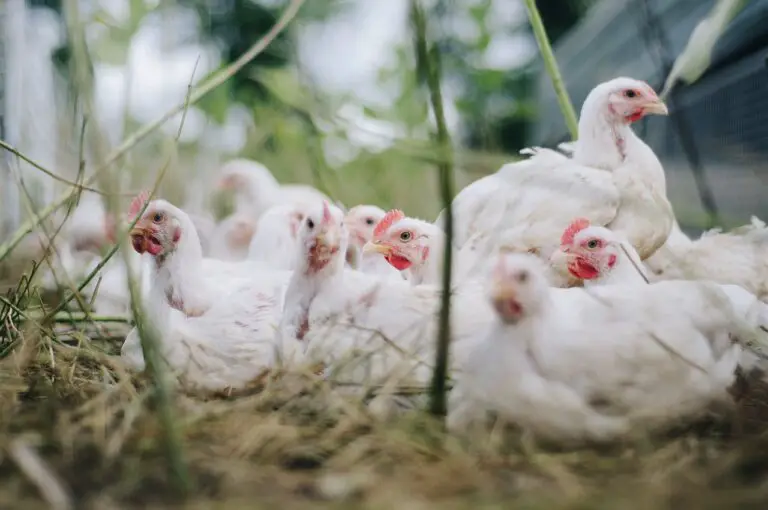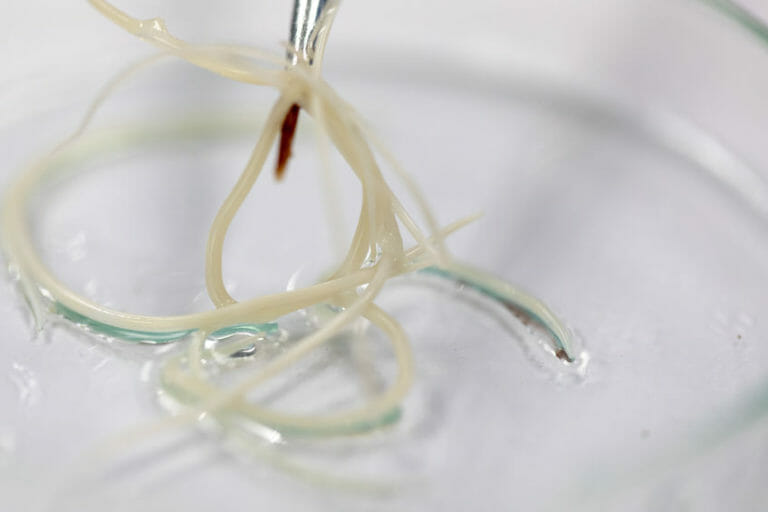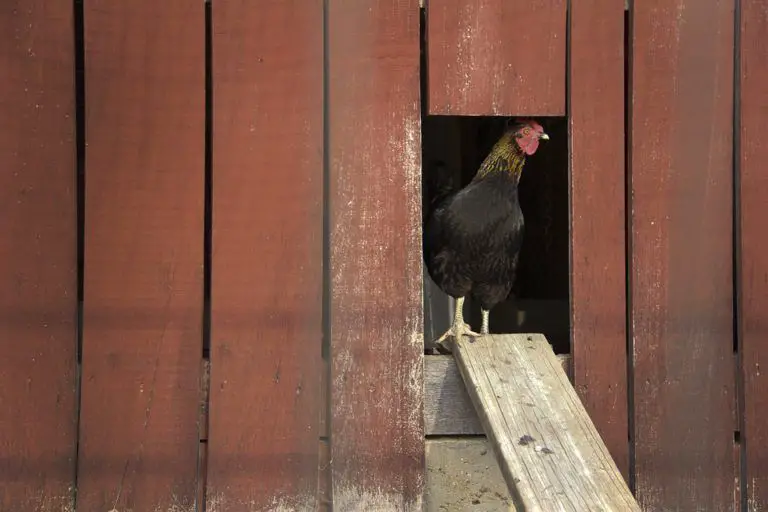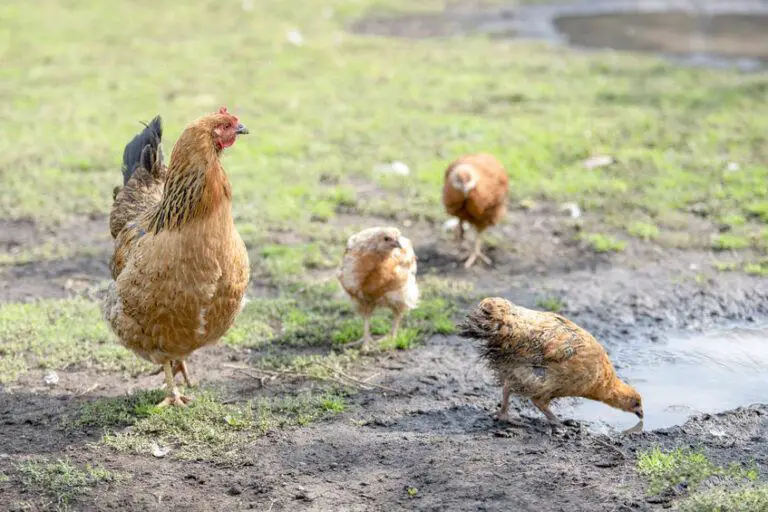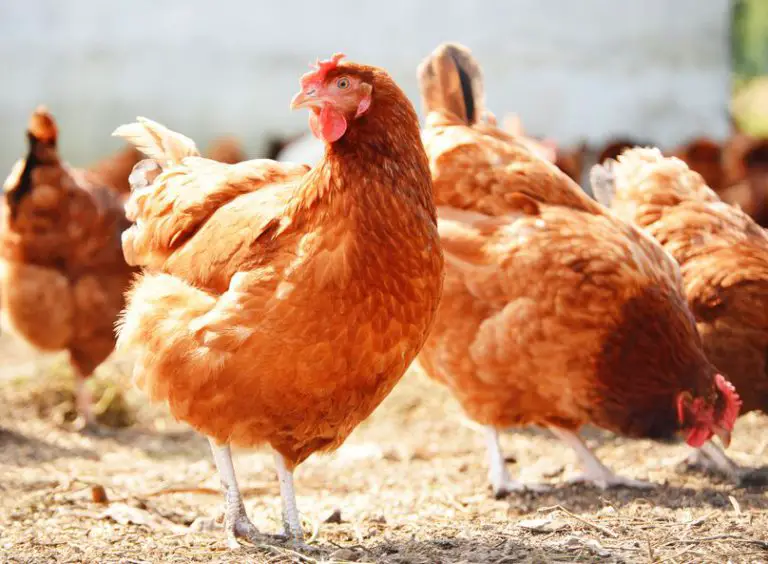Chicken Wings: To Clip or Not To Clip – A Guide To Clipping Chicken’s Wings
Are you on the fence about whether or not you should clip your chicken’s wings?
Most people will tell you that chickens don’t fly. However, you are going to be surprised at how talented your cluckers are with their aviation abilities!
We’re going to take you through some serious “wing-flapp’n” information on why and how you should clip your chicken’s wings.
Clipping chicken’s wings to prevent flying keeps our beloved birds from running off and falling prey to all kinds of predators!

Wild to Domesticated Flyers
Over 2,000 years ago, someone in Southeast Asia domesticated a few red junglefowl. These domesticated birds came to be what we know now as our chickens. Red junglefowl is quite capable of flying because they roost high up in trees as protection against predators.
Our little cluckers in the backyard certainly don’t fly as far as red junglefowl, but they do make an effort! The more domesticated the red junglefowl became, the heavier they got, hence the beginning of the chicken. Chickens have absolutely no grace or finesse in their attempts to fly. In fact, they typically end up with a thud after briskly getting uptake of flight.
Smaller breeds of chickens are more prone to flying since size doesn’t impede their ability to become airborne and travel further. Heavier breeds such as Orpingtons, Wyandottes, and Australorps can’t achieve enough lift to fly far.
See the video, THOUSANDS of chickens FLY, to watch just how well chickens can fly to get an idea. It’s incredible.
Down off a mountainside when their owner blows a whistle. Tongren Prefecture, Guizhou Province
Why is Clipping Chicken Wings Important?
So, do chickens need their wings clipped? Many chicken owners have to consider the benefits of clipping vs. the cons of not clipping.
Unless you have your chickens housed in an enclosed coop, there’s always the potential that they will fly off. Backyard chickens have been known to scale fences as tall as six feet.
Most common reasons for clipping chicken wings:
- It keeps the chickens within a fenced-in boundary to protect them from predators.
- Neighbors may not enjoy having chickens landing in their yard or on their property.
- When one chicken wanders by flying, the flock will follow.
Free-ranging chickens and those kept in an enclosed coop should not have their wings clipped. Free-rangers on homesteads or farms need the protective ability to fly to escape predators.
How high can chickens fly with clipped wings? Well, they still have the ability to get enough lift to go a few feet, but that’s about it. Can chickens with clipped wings still roost? Yes, they can roost with no problem.
Is Clipping Chicken’s Wings Cruel?
Before we go any further, we want to quell any concerns about whether clipping wings is humane or not. We can tell you that clipping doesn’t hurt the chicken. However, you must decide to clip or not to clip based on your personal choice.
Clipping should only be done for the following reasons.
- Wandering off
- Jumping over a protective barrier such as a fence
- Getting into neighboring yards
There’s a lot of debate on clipping chicken’s wings, one or both. Clipping only one wing will cause an imbalance in your chicken that can result in injury. On the other hand, if you clip both wings, the odds of preventing the chicken from flying is doubled.
Do clipped chicken wings grow back? Yes, they do. Clipping wings (if done) will need to be done regularly to maintain control over their ability to fly.
How Do I Clip My Chicken’s Wings?
So, are you ready to learn how to clip chicken’s wings? Just remember, it doesn’t hurt them!
Before your first time clipping your chicken’s wings, practice handling them, wrapping them up, and spreading their wings out.
A Bit About Feathers
Chicken’s wings have three sets of feathers.
Primary Feathers
- Located just below the first set of convert feathers.
- These are typically the feathers you’ll clip.
- If you notice your chicken is still gaining momentum in flying after clipping the primary feathers, it’s time to clip the secondaries.
Secondary Feathers
- Located under the convert feathers closest to the body.
Convert Feathers
- These feathers are overlapping the primary and secondary feathers.

Note: New feathers, also known as pin/blood feathers, should never be clipped! These are easily identified because they are tiny new feathers protruding directly from the skin.
Steps to Clipping Your Chicken’s Wing Feathers
Things You’ll Need:
- Someone to help you and be a second pair of hands.
- Sharp Scissors (never use dull ones)
- Towel or small blanket
- Chair or place to sit down as you clip.
- Lots of patience until you get used to doing it.
- Wrap the chicken in a towel or small blanket.
- Sit down and place the wrapped chicken in your lap.
- Secure the feet of the chicken with one hand.
- Wrap your arm around the chicken snuggly.
- Have your helper gently pull the chicken’s wing out from underneath the towel/blanket.
- Fan the feathers outwards, so you have a clear view of the primary feathers.
- Locate the convert feathers just above the primary feathers.

- Cut the primary feathers just below the convert feathers.
- Proceed to do the other wing.
A Final “Cluck” For You!
The more you clip, the better you get!
Protecting your cluckers by preventing the potential of flying off is something most chicken owners must do. Don’t worry about the clipping hurting them. If anything, it may hurt their pride initially. If you see a pouting chicken that results from clipping, make sure you let us know!
Happy “chickening” to you!
Like This Post? Pin it




